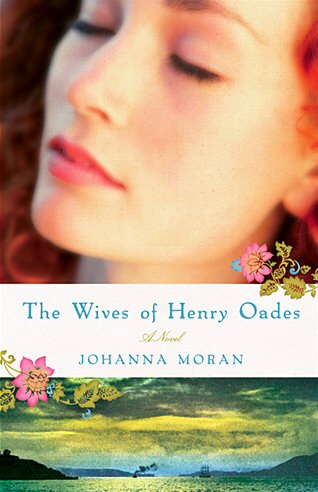The Wives of Henry Oades: A Novel (Random House Reader's Circle)
An English accountant and his two wives are the subject of this intriguing and evocative debut novel based on a real-life 19th-century California bigamy case. A loving husband and attentive father, Henry Oades assures his wife, Margaret, that his posting to New Zealand will be temporary and the family makes the difficult journey. But during a Maori uprising, Margaret and her four children are kidnapped and the Oades's house is torched. Convinced his family is dead, Henry relocates to California and marries Nancy, a sad 20-year-old pregnant widow. When Margaret and the children escape, eventually making their way to California and Henry's doorstep, he does the decent thing by being a husband to both wives and father to all their offspring, a situation deemed indecent by the Berkeley Daughters of Decency. Moran presents Henry's story as if making a case in court, facts methodically revealed with just enough detail for the reader to form an independent opinion. But it's Margaret surviving the wilderness, Nancy overcoming grief and the two women bonding that give the book its heart and should make this a book group winner.
Author Johanna Moran based her novel on an old newspaper article. But that article turned out to be a hoax:
History pulls a fast one on author
By Matt Nippert
What's interesting here is the whole literary process. A Florida-based author reads one old newspaper article and decides she's qualified to write about the Maori culture of New Zealand in detail. She depicts the Maori as the worst kind of savages--no different from a dime novel's depiction of Indians a century ago.
Worse, a New Zealand publisher put out the novel this year. Apparently, no one thought it was a problem to stereotype the Maori as inhuman monsters in 2010.
I'd be surprised, but this is the same attitude behind such works as Apocalypto, Comanche Moon, and Indiana Jones and the Kingdom of the Crystal Skull. Indigenous people may be civilized now--since we've introduced them to Christ, clothing, and Coca-Cola--but they used to be bloodcurdling demons from a horror movie. Or so the average person thinks.
For more on the Maori, see Maori War Chant in Invictus and "Go Native" at the Visionary Village. For more on Native-themed books, see The Best Indian Books.


"The family is "enslaved" by the Maori for a long time, like years and years, yet even until the day they "escape," Margaret never refers to them by name, never uses a positive adjective to describe the village, and continues to see their ways as completely backwards. There is absolutely no nuance in the portrayal. They are savage, through and through."
ReplyDeleteWell, you really can't fault the portrayal here. It's very much normal not ti be able to see the people that KIDNAPPED you in a positive light. In fact, I believe it would be either that, or Stockholm syndrome, it's simply not a situation that allows for a lot of nuanced opinions and emotions. I'm sure a Maori or Native American mother kidnapped by white settlers along with her children would not find much words of kindness for them either.
Adrienne Keene covered your point when she wrote: "It's not like there wasn't opportunity to provide an alternate view, the narration in the novel switches several times, from Margaret, to her husband, to the new wife in Berkeley, etc. Moran just chose not to include an additional perspective."
ReplyDeleteIn other words, "that's just the way it was" isn't a good excuse in fiction. There are ways you can present both sides of an issue or character without violating the story's premise.
"the narration in the novel switches several times, from Margaret, to her husband, to the new wife in Berkeley"
ReplyDeleteOkay, so which one of these would have been likely to have a positive opinion on the Maori? In fact, from what I gather, Margaret was the only one in prolonged contact with them, and, as I noted above, due to the circumstances of this contact (ie. kidnapping and enslavement), she definitely wouldn't be likely to form postive opinions. Same goes for the husband, really...it was HIS wife and kids that were enslaved. And the wife in Berkeley (unless I'm missing something, in which case, please fill me in) wouldn't have any personal experience of the Maori at all. So which character are the positive observations/opinions supposed to come from in this book?
Don't get me wrong, I don't think Maori are savage/one-dimensional/etc. at all. I just don't think that the characters and situations depicted in this book allow for a very multi-faceted portrayal.
Which character? How about a fourth character to provide an "additional perspective" the three characters lacked? Perhaps a missionary who was sympathetic to the Maori, or a Maori who learned the white man's ways and "lived in two worlds."
ReplyDeleteAgain, it's a fictional story under the author's control, not a real-life documentary. Moran chose characters who were unsympathetic to the Maori when she didn't have to.